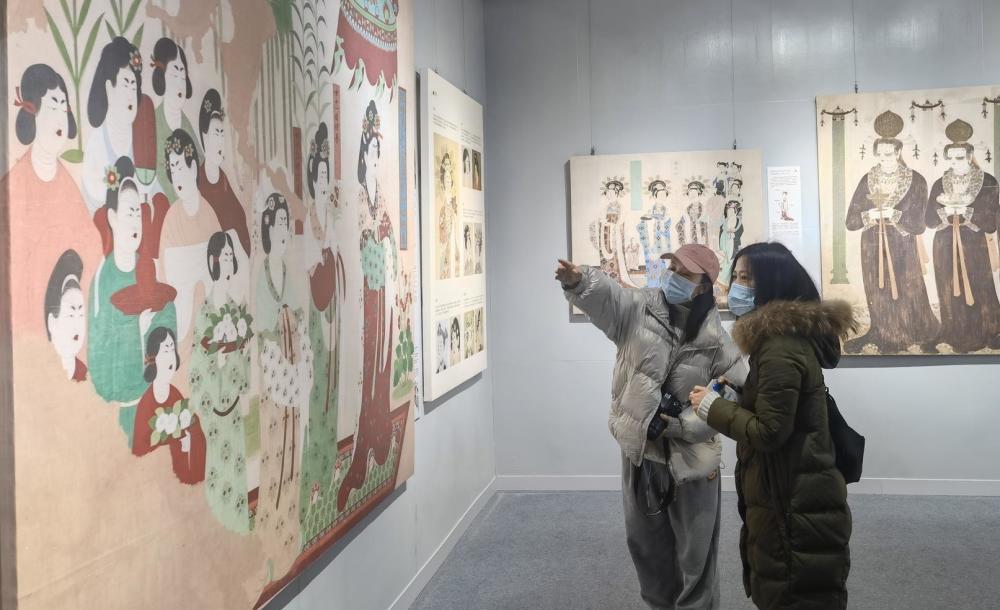Dunhuang Mogao Grottoes is the world's largest surviving Buddhist cave temple site, but many people may not know that the Dunhuang murals also "hide" Mount Emei. On January 25th, the Feitian Shenyun Mogao Spirit - The Emeishan Grottoes Art Exhibition in dunhuang murals was officially launched at the Leshan Art Museum, showing the wonderful origins between Dunhuang culture and Emeishan culture.

Citizens watch the exhibition
The origins of Sichuan and Dunhuang are inseparable. It is understood that Dunhuang and Leshan are located at the key point of the Silk Road in the north and south, and together witness the history of cultural exchanges between China and foreign countries in ancient times. The Dunhuang grottoes from the late Tang Dynasty to the Fifth Dynasty period preserve a large number of murals and paper silk paintings depicting the image of The Vishamen Heavenly King, and the grottoes in the Sichuan-Chongqing region also have a large number of carved statues of the Vishamen Heavenly King from this period, which are also distributed in the Leshan Jiajiang River, and their characteristics are basically the same as those stored in the Dunhuang Grottoes, and the Buddhist art exchange between the two places is very close. In the 1940s, Zhang Daqian, a great painter from Sichuan, went to Dunhuang to copy murals and returned to Sichuan to hold an exhibition, causing a global sensation.
Part of the 3rd Cave of Yulin Cave "Puxian Change"
The Red Star News reporter saw at the exhibition site that in a mural of "Puxian Change" in cave 3 of Yulin Cave, the main image is Puxian, and Mount Emei, located in the upper part of the south side of the picture, is a typical Northern Song Dynasty ink landscape style. Peaks and peaks, mountains and rocks between the peaks and pavilions, heavy eaves stacked pavilions, magnificent and majestic. Behind Puxian, the mountains and rivers near and far are interesting, and the grass and trees in the southern country are lush and lush.
The relevant person in charge of the Art Research Department of Dunhuang Research Institute said that Mount Emei appears very frequently in the Buddhist culture of Dunhuang murals, according to the current statistics, there are more than 70.
It is understood that the art exhibition was exhibited in Leshan Art Museum and Emeishan Museum from January 25 to March 15 and from March 31 to April 20, respectively, with a total of 160 exhibits including replica caves, cave miniature models, replica statues, replica murals, and imitation musical instruments.
Red Star News reporter Gu Aigang photographic report
Edited by Zhang Li
(Download Red Star News, there are prizes for the newspaper!) )